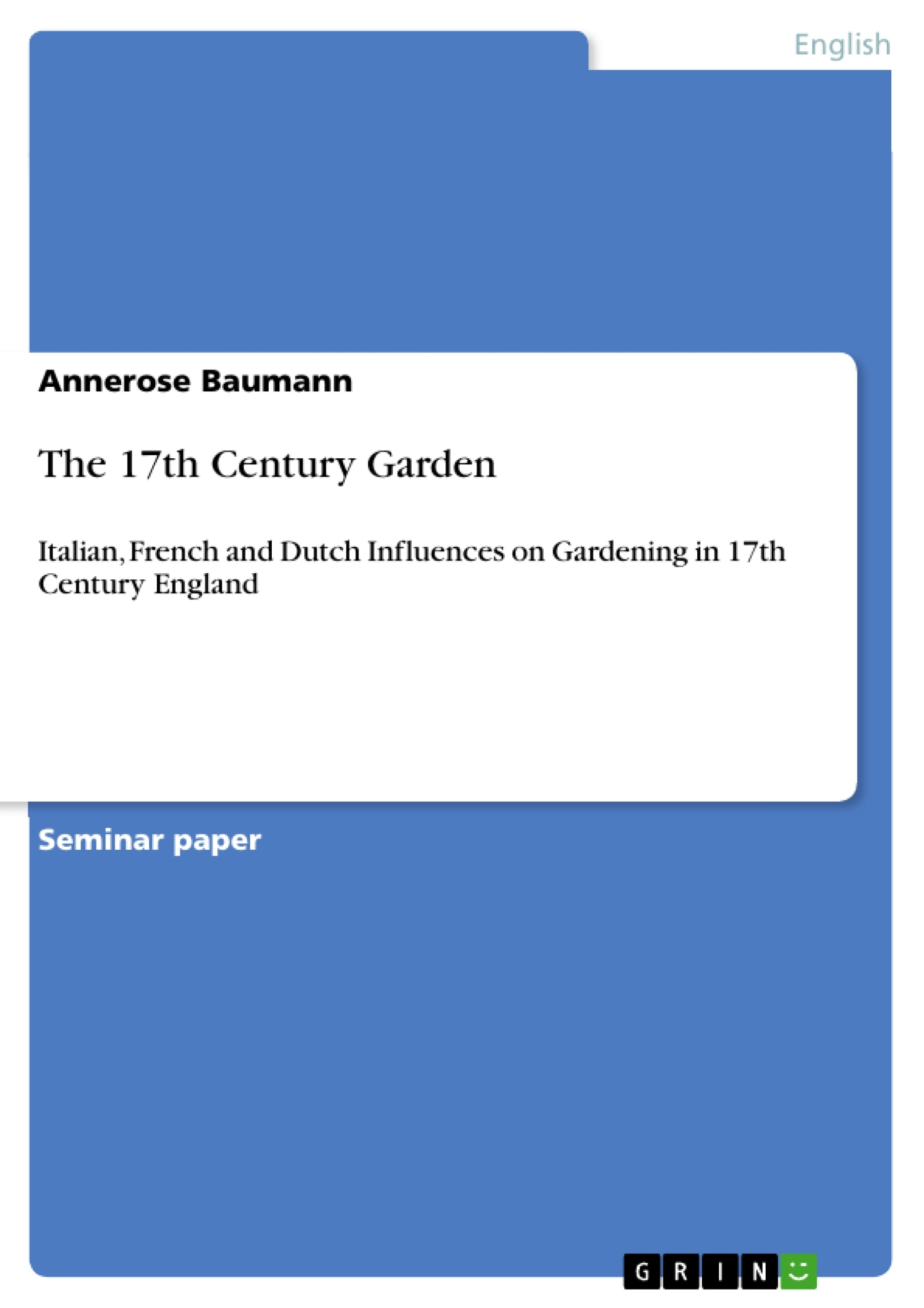This essay draws a brief sketch of the three main styles that influenced English gardeners in the course of the 17th century, the Italian Renaissance and Mannerism, the French Baroque and the Dutch style, describing their features, how they came to England and in which way they were applied there. Furthermore the question of how garden design was influenced by political circumstances shall be discussed briefly.
Inhaltsverzeichnis (Table of Contents)
- Introduction
- Foreign Influences on English Gardening Styles throughout the 17th Century
- Italian influence (Renaissance/Mannerist style)
- French influence (the Baroque garden)
- Dutch influence
- Conclusion
- Appendix: Illustrations of 17th Century Gardens in Italy, France, The Netherlands and England
- Mannerism
- French style
- Dutch style
- Works Cited
- List of Illustrations
Zielsetzung und Themenschwerpunkte (Objectives and Key Themes)
This essay provides a brief overview of the three main styles that influenced English gardeners in the 17th century – the Italian Renaissance and Mannerism, the French Baroque and the Dutch style – describing their features, how they came to England and in which way they were applied there. It also briefly discusses how garden design was influenced by political circumstances.
- Italian influence on English gardening in the 17th century
- French influence on English gardening in the 17th century
- Dutch influence on English gardening in the 17th century
- The influence of political circumstances on garden design in England
- The development of English gardening styles throughout the 17th century
Zusammenfassung der Kapitel (Chapter Summaries)
The introduction of the essay discusses the evolution of English garden design, noting that the "English garden" as we know it today developed in the 18th century. It also highlights the scarcity of surviving 17th century gardens due to later renovations and the destruction of older designs. The essay focuses on the three main styles that influenced English gardens in the 17th century: Italian Renaissance/Mannerism, French Baroque, and Dutch styles.
The second chapter explores the impact of foreign influences on English gardening styles. It delves into the Italian influence, particularly the Mannerist style, which emerged in the second half of the 16th century. This style is characterized by its larger scale, terraces, staircases, abundant fountains and statuary, and allegorical programs inspired by Greek and Roman mythology. The chapter then explores the influence of SALOMON DE CAUS, a Frenchman who studied in Italy and brought Mannerist ideas to Queen Anne's gardens in England.
The third chapter examines the influence of the French Baroque garden on English gardening. The chapter discusses the development of the Baroque style, which emphasizes wealth, splendor, and the power of the monarchy, exemplified by Louis XIV's reign in France. It highlights the work of ANDRÉ LE NÔTRE, a key figure in the development of the French Baroque garden, and his creation at Vaux-le-Vicomte, a masterpiece of French classical garden art. The chapter then discusses LE NÔTRE's work at Versailles, which became a model for formal gardens throughout Europe, and its impact on English gardening after the Restoration of the monarchy.
Schlüsselwörter (Keywords)
The key terms and concepts explored in this essay include: 17th century gardening, English garden, Italian Renaissance, Mannerism, French Baroque, Dutch influence, SALOMON DE CAUS, ANDRÉ LE NÔTRE, Vaux-le-Vicomte, Versailles, political circumstances, garden design, and the evolution of English gardening styles.
- Citar trabajo
- Annerose Baumann (Autor), 2006, The 17th Century Garden, Múnich, GRIN Verlag, https://www.grin.com/document/165566



